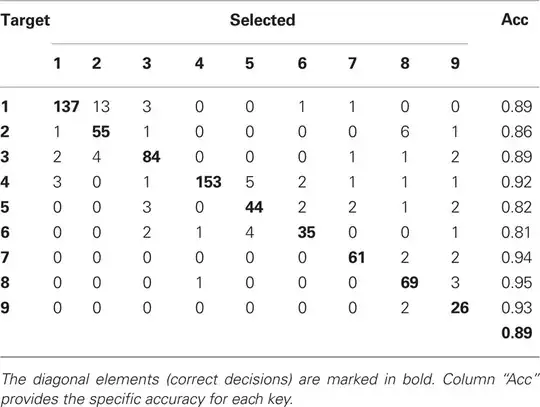I have a problem with 6 classes. So I build a multiclass classifier, as follows: for each class, I have one Logistic Regression classifier, using One vs. All, which means that I have 6 different classifiers.
I can report a confusion matrix for each one of my classifiers. But, I would like to report a confusion matrix for ALL the classifiers, as I've seen in a lot of examples here.
How can I do it? Do I have to change my classification strategy, using a One vs. One algorithm instead of One vs. All? Because on these confusion matrices, the reports says the false positives for each class.
Example of a multiclass confusion matrix
I would like to find the number of misclassified items. In the first row, there are 137 examples of class 1 that were classified as class 1, and 13 examples of class 1 that were classified as class 2. How to get this number?
